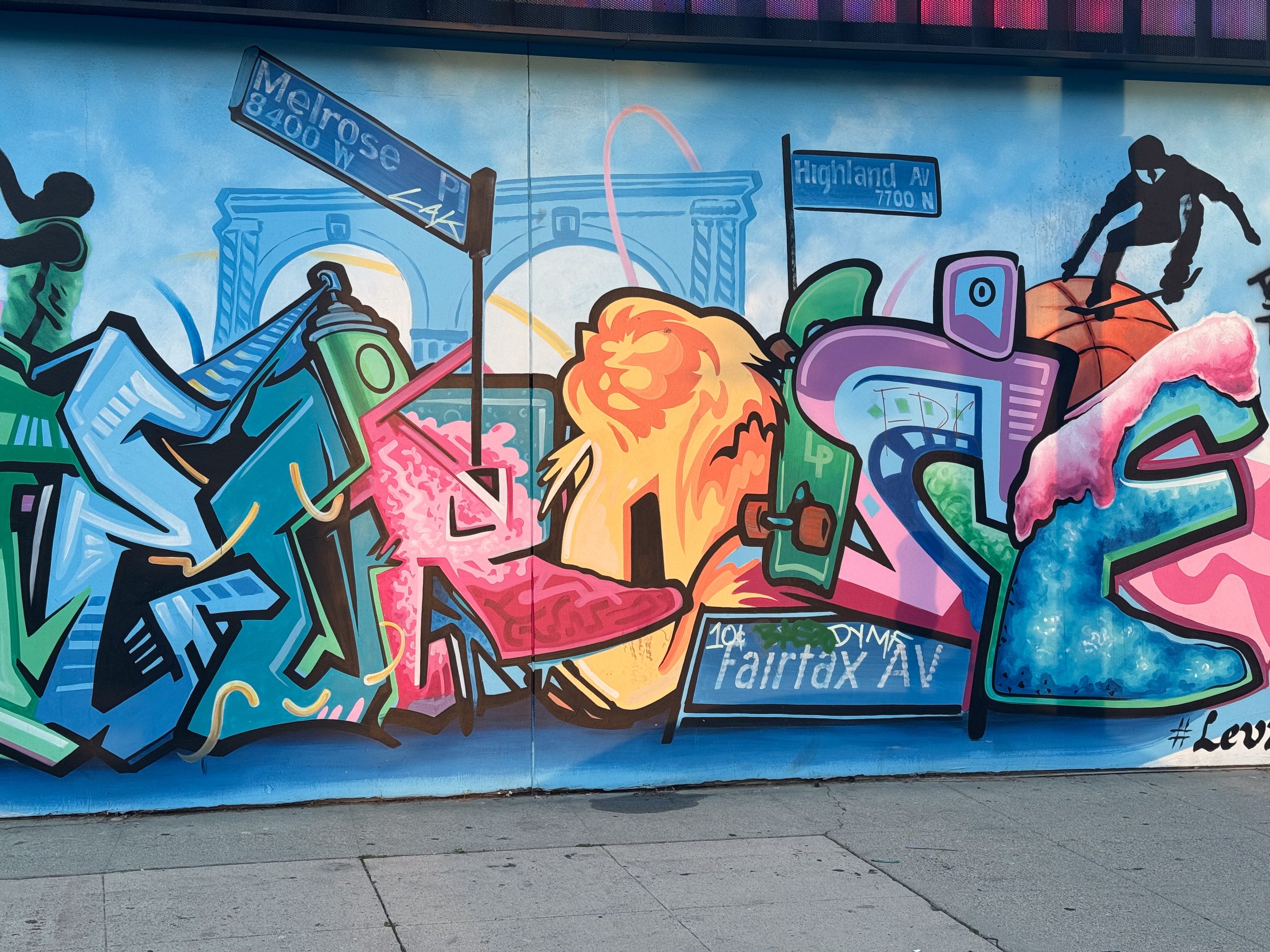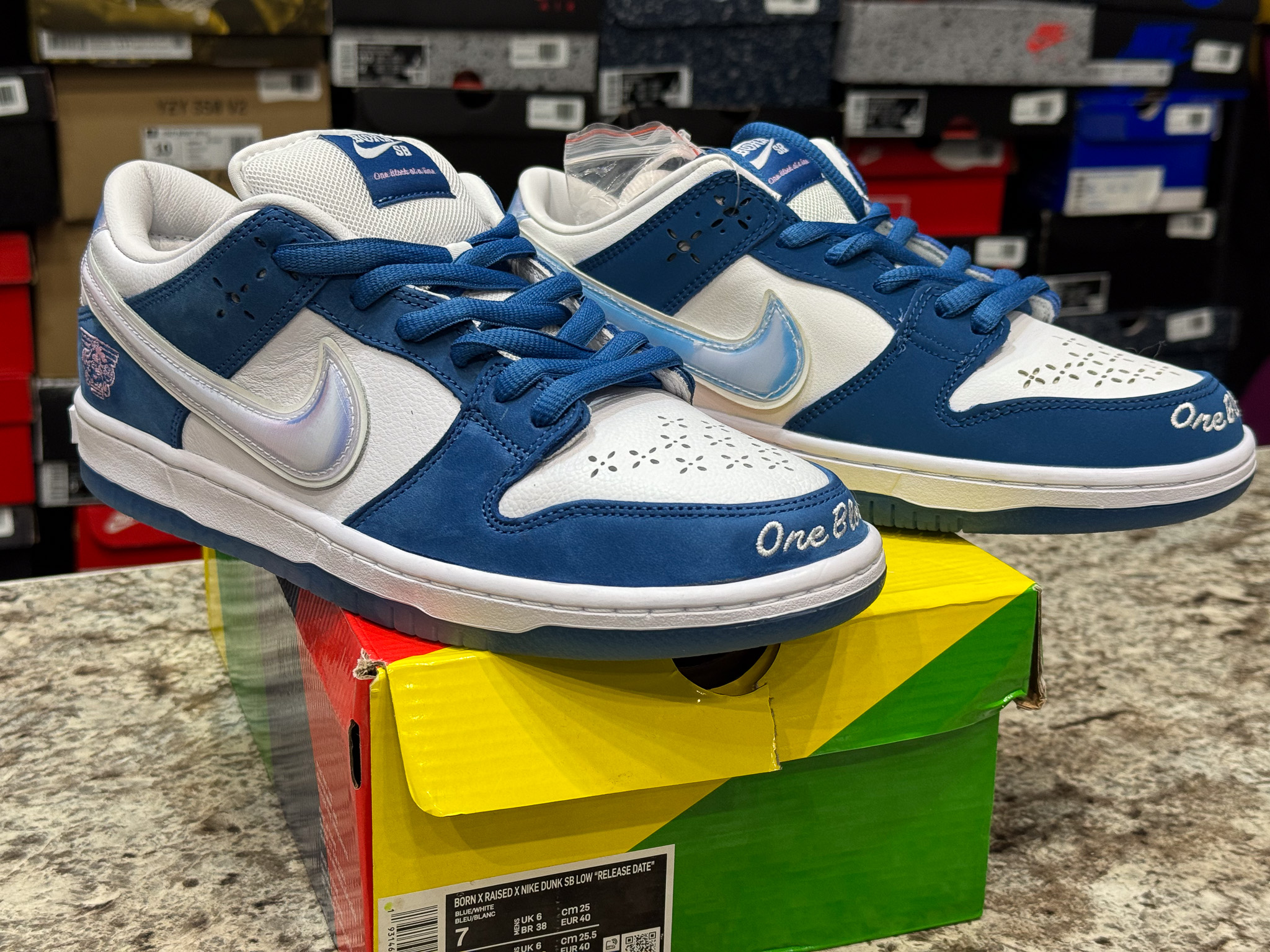
Sneaker culture in a growing counterfeit market
Brandon Garcia
In-Store Consignments and Boutiques Keep Sneaker Culture Thriving
In the Fairfax district of Los Angeles, lies the heart of sneaker reselling culture. Boutique after boutique, filled with limited released Jordan, Nike and Adidas shoes. A few can range from as low as $100 for a used pair, while others can go upwards to $20,000.
Inside Coolkicks, the current oldest running sneaker resale shop on Melrose Avenue, sneaker authenticator and content creator Rami “the icon” Almordaah is in a buying negotiation with a client who brought in two pairs of Nike Dunk lows. But before they can negotiate a price, Almordaah must inspect the shoe to ensure it is legitimate.
Immediately, Almordaah notices something is off. From the faded red color and inconsistent font sizing on the box, to the displacement of the Nike swoosh and off-colored laces on the shoe. Almordaah had to give his client the bad news. The shoe is fake.
“I see like one to five times a day when I’m here. Some days we’ll see somebody come in with like a collection of 10 fakes,” said Almordaah. “So it just varies… maybe they don’t know, or they’re just coming to see if it’s real or not, or they’re trying to sell it.”
Inside CoolKicksLA
A busy CoolKicks on a Saturday afternoon. Photos captured March 23, 2024 (Brandon Garcia/USC Annenberg)
“I’ve been a sneaker head my whole life. I grew up watching Derek Jeter and Kobe Bryant and they were signed to Jordan. And Kobe made his own sneaker brand too. So I guess just being a fan of those athletes made me like sneakers.
Growing up I used to play baseball and basketball too. So I’d always try to wear what they were wearing. And then yeah, ended up having a big collection throughout the years and then started selling some of them to pay for college and then resell them, and then realize I can make a little money selling them.”
Frankie Garriola
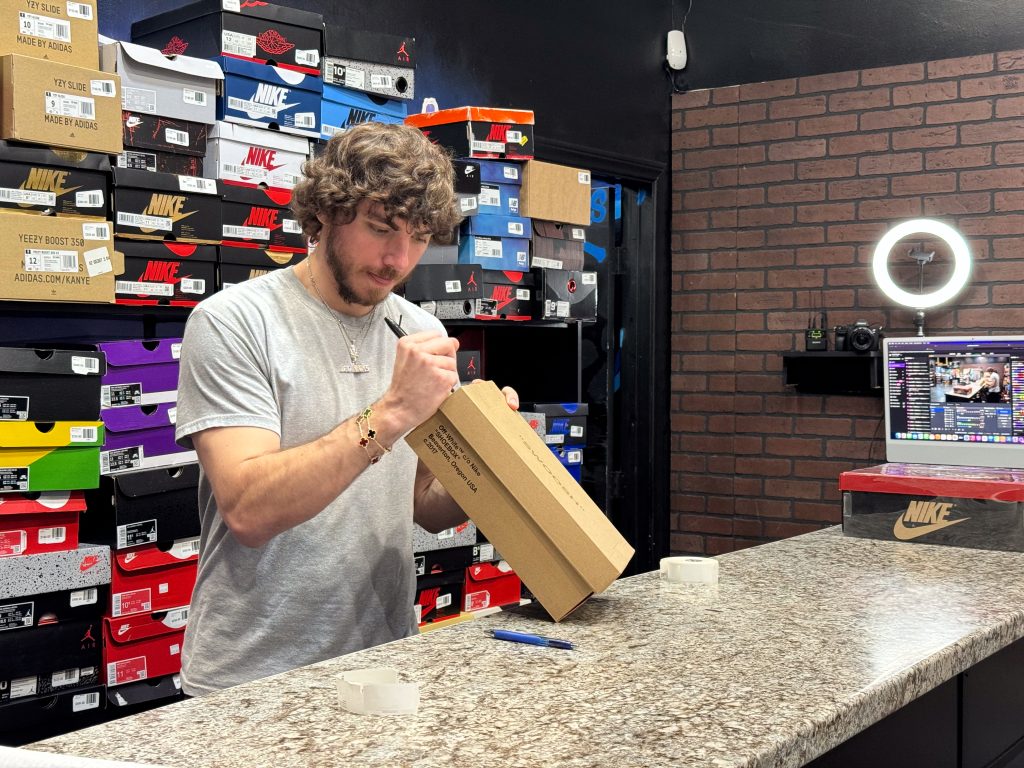
As authenticators in CoolKicks, it’s Almoradaah and his colleague, Frankie Garriola, who act as the gatekeepers between legitimate and fake products in their boutique. Unfortunately, they say it’s become even more difficult to spot one.
“The fakes, now a lot of them are identical. You can’t really tell by just looking at them, that’s why if it’s on foot and it’s a good fake you just won’t tell,” said Garriola.
According to a report from fitness trend reporter RunRepeat, in 2023 the sneaker reselling market earned $12 billion in revenue to date compared to the legitimate footwear industry’s estimated $400 billion market. However, the counterfeit footwear market is estimated to be valued at $600 billion.
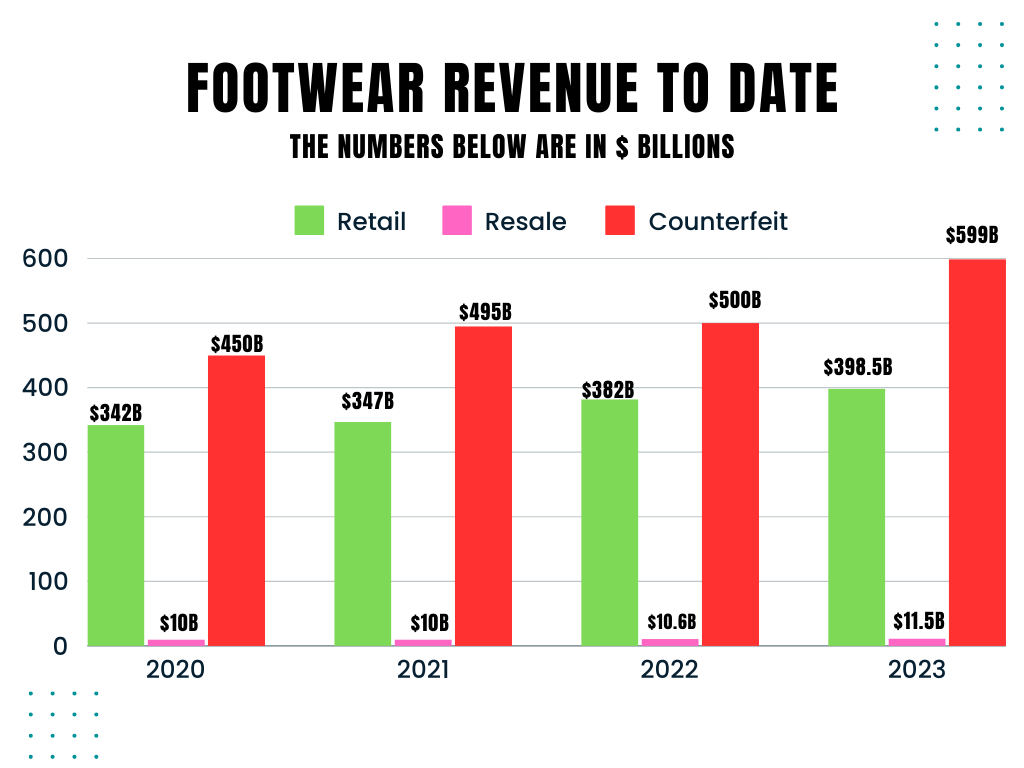
Fashion expert Johanna Blakley says that while the numbers may be inflated to garner attention from politicians, counterfeit products in the fashion industry have been around for more than 20 years and sneakers are no different.
“Trademark violation is terrible for the fashion market and industries, because then nobody really knows provenance,” said Blakely. “Who is making what, and that’s a really important part of the consumer experience.”
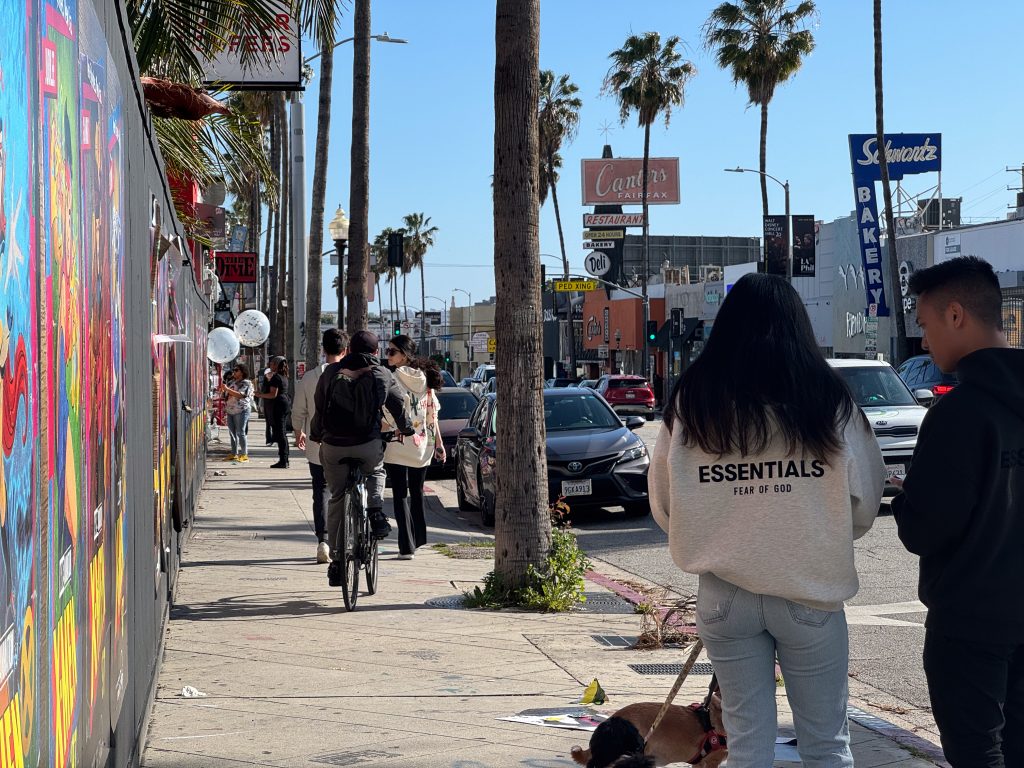
Sneaker boutiques in Fairfax have acted as a trusting source for sneakerheads to buy, sell, and trade their shoes ever since the skateboard brand, Supreme, opened their fifth location in 2004 and made the area a hub for streetwear culture. In 2023, they relocated a few streets away on Sunset Boulevard.
In 2016, however, the culture shifted from an in-person presence to an online hype market with the birth of StockX, the current biggest online sneaker consignment where the user themselves sets the asking price of their shoes and StockX takes a percentage through fees.
While online aftermarkets have already existed, like Ebay, StockX has established itself as the stock market of online sneaker reselling.
“It’s definitely important. We use it to engage the sneaker market, because they sell the most shoes on a platform at the lowest price, we use it to go off pricing,” said Garriola. “So we want to be fair to that.”
Despite their lawsuit filed by athletic-brand Nike for selling fake sneakers in May of 2022, StockX still leads the sneaker resale market with a $504.9 million total revenue as of 2023.
While StockX denied an interview due to their pending litigation, they did provide a comment:
“We stand by our verification process as one of the first and best in the industry. In 2023, StockX protected customers by rejecting more than 325,000 products worth more than $80M.”
– StockX
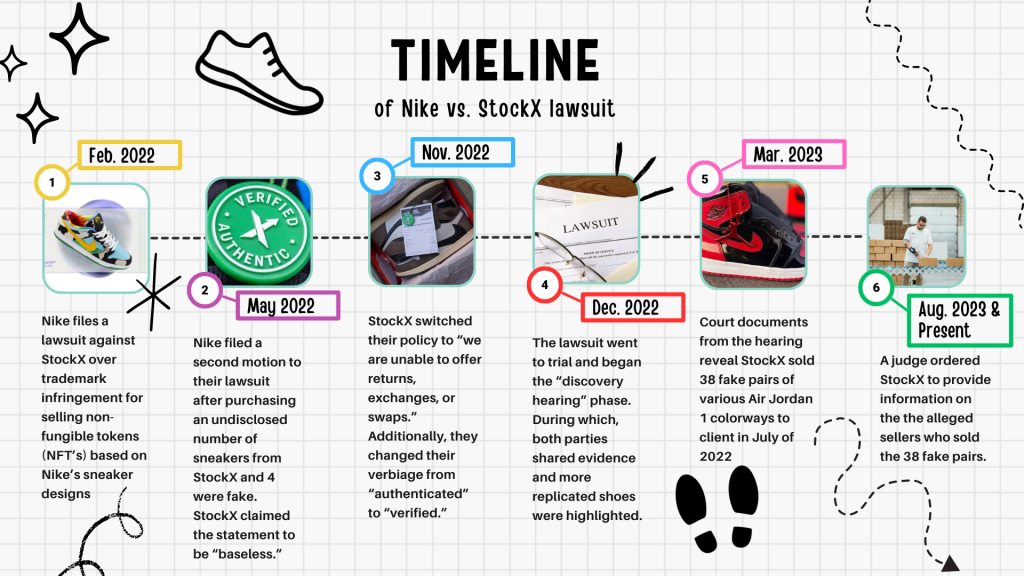
According to an interview done by pop culture media platform Complex, one year after the initial lawsuit, StockX user Roy Kim purchased 62 pairs of Air Jordan ones; 38 were fake. Nike used Kim’s experience as evidence in their lawsuit to challenge StockX’s authentication process.
The most recent update came in August of 2023 when a judge ordered StockX to provide information on the sellers who allegedly sold the fake sneakers to Nike and Kim.
“I don’t buy from StockX no more,” said Tavon Braggs. “Sometimes it may not be authentic. So I just like to come to the stores. That way I can check out the shoes, make sure they are authentic and look for myself. Do all my research.”
Braggs, an avid sneakerhead who enjoys shopping in the Fairfax district because of the community and atmosphere, expressed his distrust with online marketplaces simply because he loves to see the product in person.
Balencia sneakers rank as the most expensive with a median resell price of $699, $20 less than what Braggs spent on his personal pair.
After his incident with StockX, he second guessed any resale outlet. Online and in-person.
“It’s kind of hard because they’re getting so good with reps now,” said Braggs. “So certain things, certain shoes, honestly, I’ll just go straight to like Footlocker or something and just buy it because I know it’s official.”
According to the U.S Immigrations and Customs Enforcement, nearly 25 million products of counterfeit goods were seized in 2022. Over three million of which were fake sneakers and if sold as legitimate products, had an estimated retail value of $90 million.
In 2022, StockX released a list of the most faked shoes they received throughout the year. Twenty-two of the 25 most faked sneakers are from Nike, and Nike took every spot in the top five most replicated shoes. Three out of the five shoes replicate Nike’s Travis Scott collaborations which began in 2016.
Inside Fairfax sneaker consignment SoleStage, store-manager Stunna says the Travis Scott collaborations are the most coveted and most believable fake he’s seen.
“Those shoes are in high demand. So with those, they might come in with a little color difference, but I still can’t see it. Because quality control at Jordan is not the greatest,” said Stunna. “If I don’t feel that it’s up to my standards, or I have to second guess it. I just don’t take it.”
To limit fakes within their shop, the SoleStage team purchases exclusively from trusting consignors.
Stunna clarified that “hyped shoes” like Travis Scott’s are the only shoes that get replicated, and encourages his clients to “do their homework” before any third party purchase.
Many of the shops have their own method to authenticate believable fakes, and Stunna relies on assistant manager and chief authenticator Kyle Pick for the job.
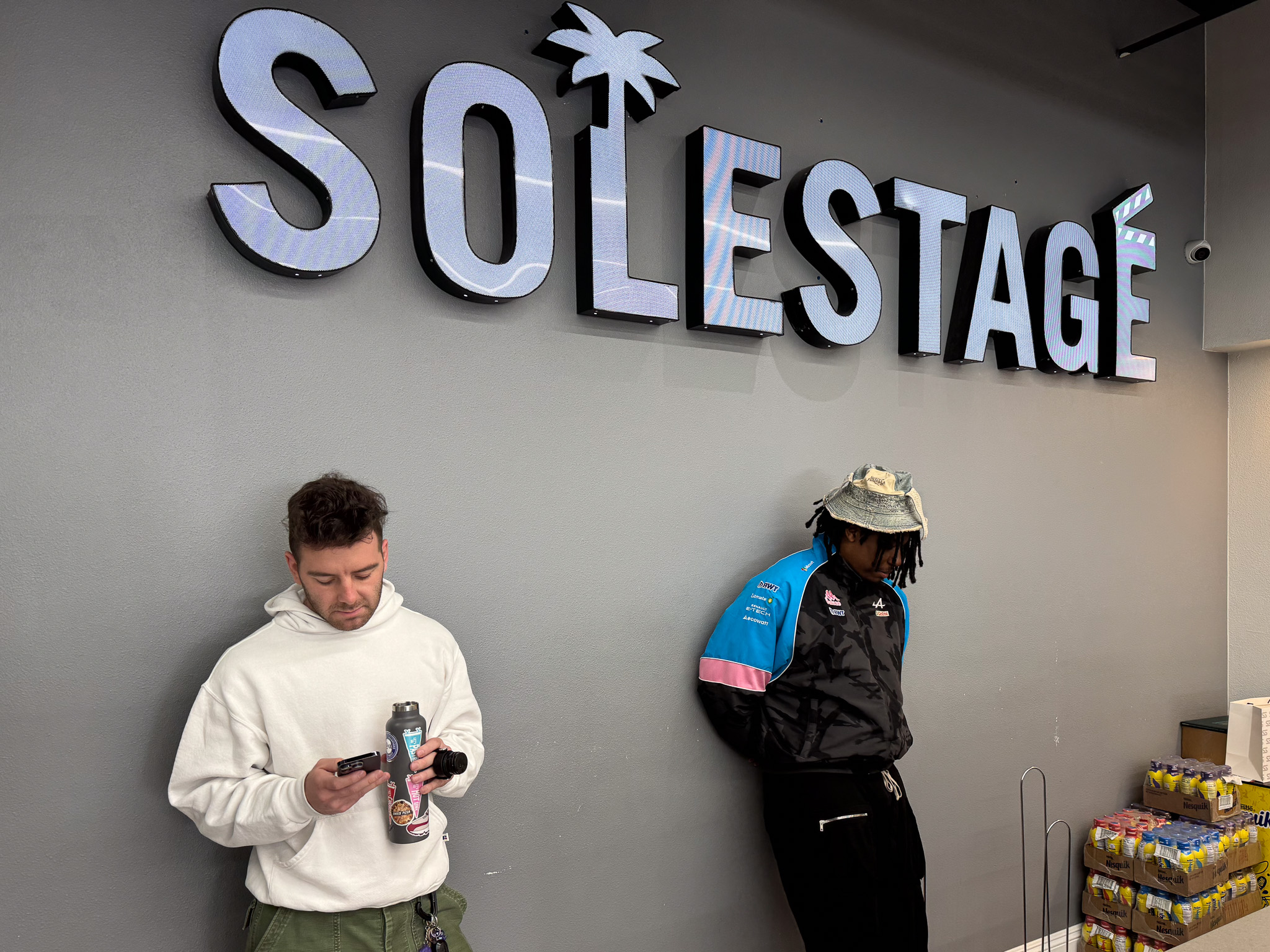
“It’s all about repetition for the most part, after you’ve seen 100 pairs of Jordan ones, whether it’s a pair of Travis’s, whether it’s a pair of breds, or even true blues,” said Pick. “You kind of just notice similarities, how they’re the exact same… once you don’t see it, that’s when it can become red flags.”
Like most boutiques on the block, SoleStage relies on their social media presence to heighten their credibility. Since 2022, they’re one the Los Angeles boutiques that is featured in Complex’s sneaker shopping segments.
Inside SoleStage
Behind the scenes and storefront of SoleStage on a calm Saturday morning. Photos captured March 23, 2024 (Brandon Garcia/USC Annenberg)
“My first pair of Jordans that I bought myself I had a summer job, it was the Last Shot 14s. So that one is the one that started everything. And I still have that to this day, I wore size 11 and a half and then somebody walked through the door here and had one, and I bought it. So got that one in my glass case at the crib. That’s what started everything. And then ever since then, I just went crazy and just made sure that I kept every Jordan that came out. But my all time favorite is a Jordan four Bred.”
Stunna
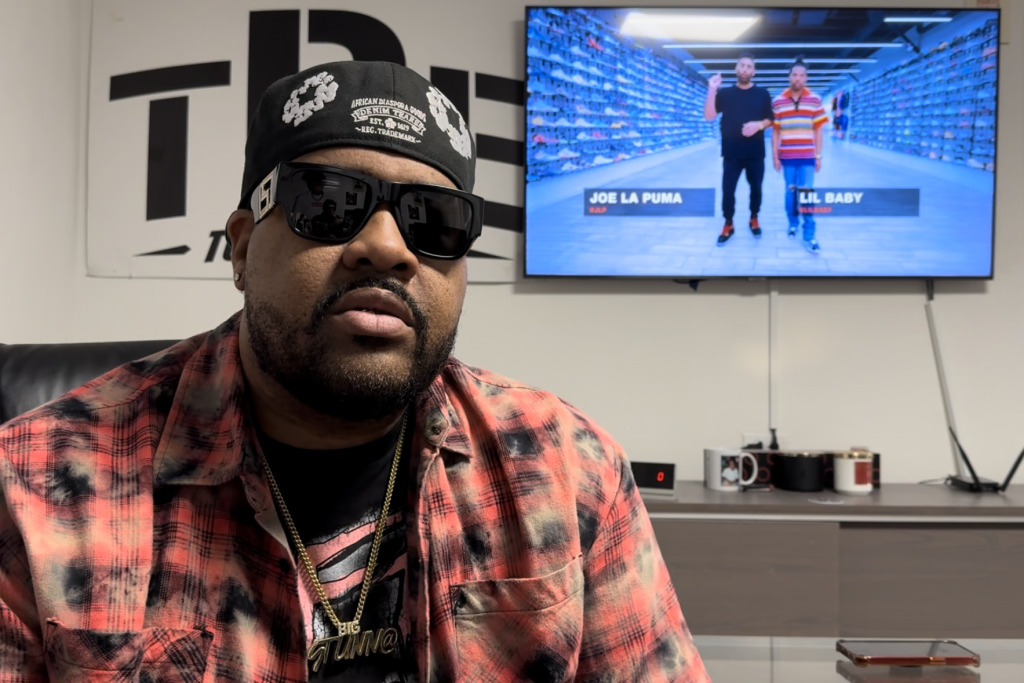
A social media presence is key to engage with the sneaker community. Almost all boutiques use it as a tool to showcase their shop’s vibe, give back through sneaker giveaways, and highlight ongoing sneaker sales.
“Social media has enabled individuals around the world to participate in this ecommerce market,” said Blakely. “Exchanging shoes, especially ones that are quite limited in terms of the number of pairs that are actually available.”
At Coolkicks, Garriola says they use fake sneakers as a tool to educate their audience on YouTube so they can spot a fake on their own.
With its benefits comes drawbacks, as social media can sometimes trick consumer buying habits and create distrust in the sneaker resale market.
One block away from SoleStage is sneaker boutique Sole Revival, where store manager Alfredo “Fredo” Sanchez says social media has created skepticism within the culture.
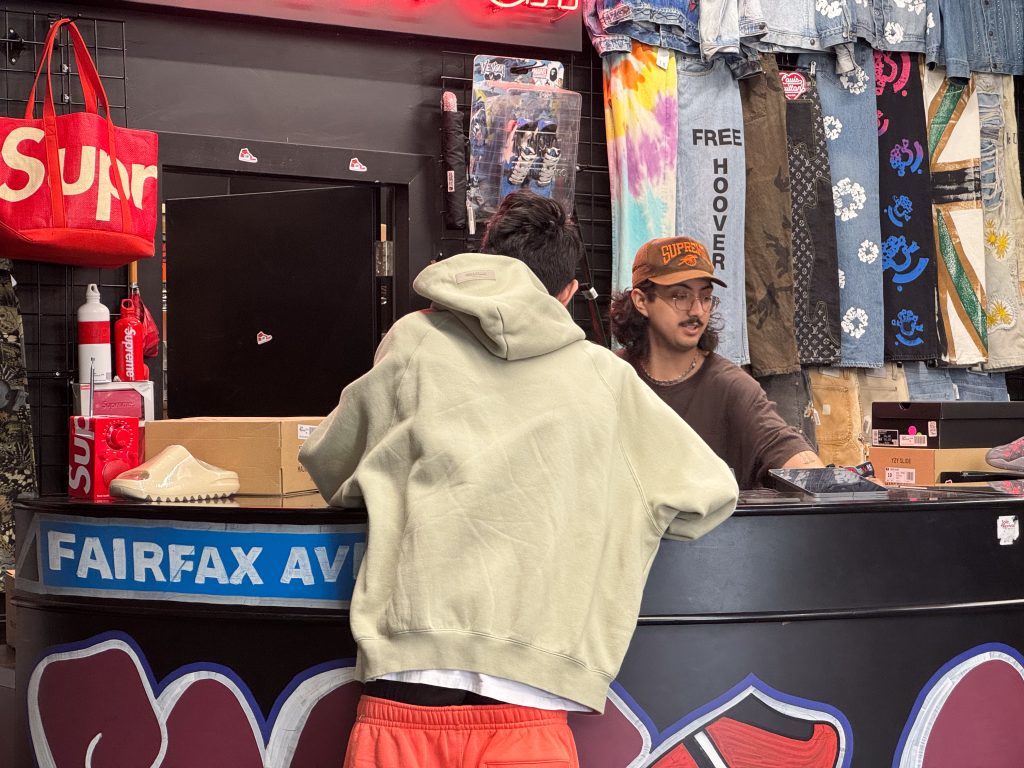
“The people who were too scared to buy the fake shoes. Now they see people with popularity buying a fake so it makes them more inclined to just say fuck it I’m just gonna buy these fakes,” said Sanchez. “On the other hand you’re gonna get people that see there are so many fakes out there and now they’re super hesitant to buy anything because they don’t know what’s going to be real, what’s going to be fake.”
For the next generation of sneakerheads like James Kharrazn and Ashton Gravori, they admire “Fredo” and “The Icon” for their dedication in authentication. Their love for sneaker culture has its sole planted right in Fairfax, when they window shopped along Melrose Avenue after school with friends before they could buy their own sneakers.
For them, social media marketplaces found on Instagram and Facebook have swayed them to stick with their local shops on Fairfax.
“Sometimes I bought from Facebook and Instagram marketplace and the products haven’t always turned out to be authentic,” said Gravori. “So I’d rather buy from stores that have authenticators like these local places rather than buying from there because you can’t always trust it.”
Inside Sole Revival
A few hours after Sole Revival opened on a Saturday. Photos captured March 23, 2024 (Brandon Garcia/USC Annenberg)
“I remember like begging my mom, we took a trip to New York when I was like, eight or nine. Around the same time I was looking on Google images on Jordans and stuff. And like, she bought me my first pair of Jordans. It was a pair of white and silver Jordans and ever since then I was like a crazy kid just trying to get sneakers. So then once I saved up enough money for my first pair, I bought a pair off eBay. From there I just took off.”
Alfredo “Fredo” Sanchez
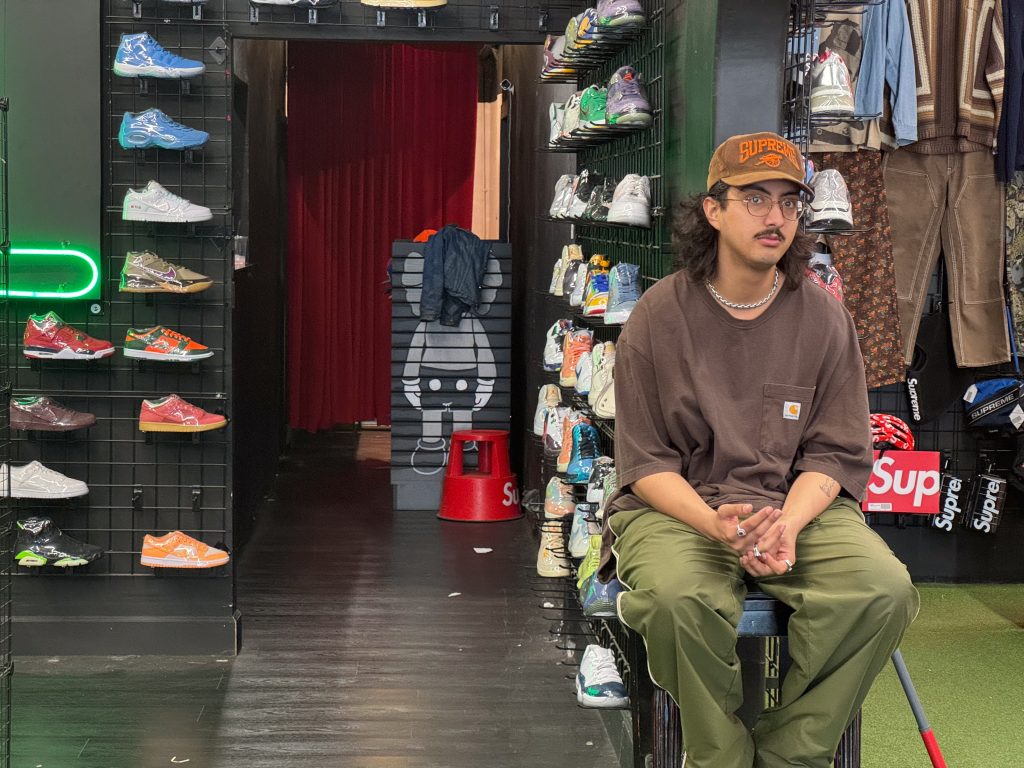
Globally, there are about 107,000 online searches for fake sneakers and in 2019, one in four online consumers unintentionally purchased and received a fake sneaker.
“My friends, my family have had these experiences, where they do purchase replica products from StockX,” said Kharrazn.”It definitely makes me feel on edge and not great.”
It’s these combinations of reasons that some sneakerheads stray away from online markets. For others, however, it strays them away from sneaker boutiques and resell products in general.
Like barbershop talk, it’s shared experiences and light-hearted conversations that create a sense of trust and community within the shops.
In SoleStage, Pick and Stunna developed Instagram Reels on a daily basis to highlight trendy sneakers they have in stock. At Sole Revival, Sanchez displayed streetwear art just above the walls filled with rows of sneakers. In Coolkicks, sneakerheads can shoot a basketball right in the middle of the store for a chance at a discounted price.
Online markets may continue to lead in profit but sneaker shops are what help the culture thrive and blossom.
“I just love how all the boutiques and the different stores really close together like you start at CoolKicks and walk down a beautiful bunch of stores,” said Kharrazn. “I really enjoy the process of just walking, hanging out, going to browse. I feel like it’s really cool to be one with the culture.”
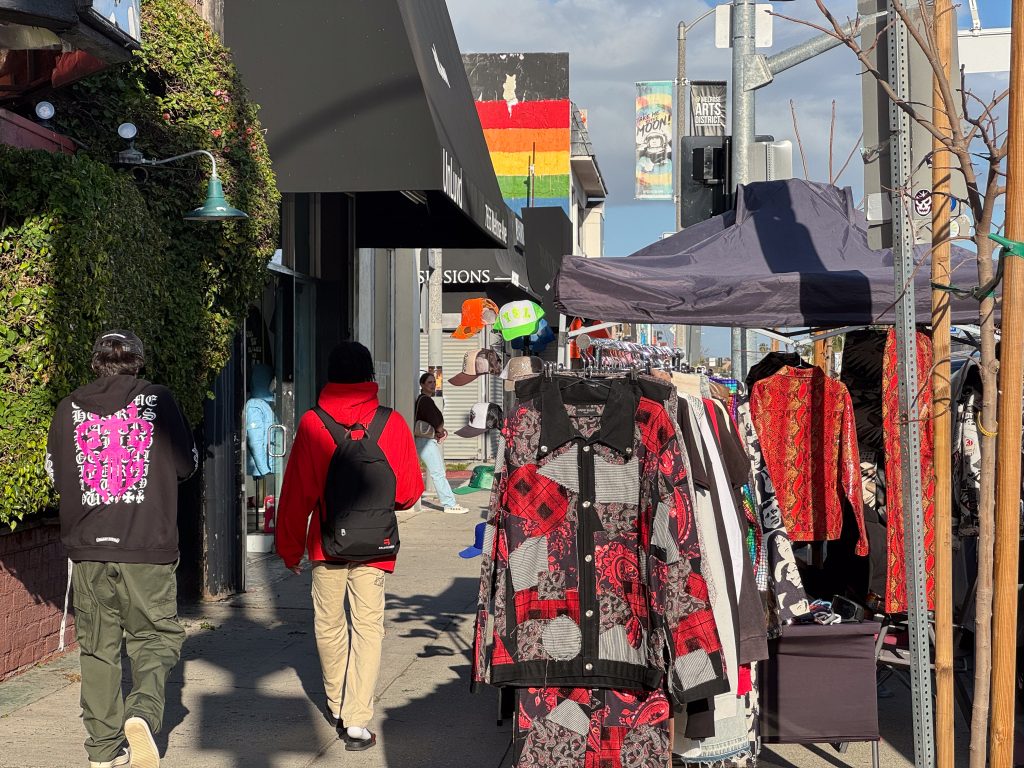
Despite the efforts from shops to establish themselves as credible businesses in this 3.2-square mile neighborhood, counterfeit products have still crept in to tarnish their reputation.
According to several reviews found on popular apps Google Reviews and Yelp, just a few stores away from SoleStage is streetwear boutique Grails who have been accused of selling counterfeit sneakers and apparel at resale price.
Most reviews warn others to not shop there. One from John S. in February of 2024, quotes California Penal Code, Section 350 PC, which references the illegality of intentionally selling counterfeit goods.
Grails nor John S. wished to provide a statement.
“I know most people that don’t know about this stuff, they’ll see the cheaper price, and they just want to do that,” said Almooradah. “But there’s the risk of getting a fake or something wrong with your shoe.”
So if one chooses to browse the streets of Fairfax or the columns of StockX for sneakers, the homework to ensure the legitimacy of a product is key before any purchase.
Identify the Fake Shoe!
One of the shoes in this image is fake, click to find out which one.
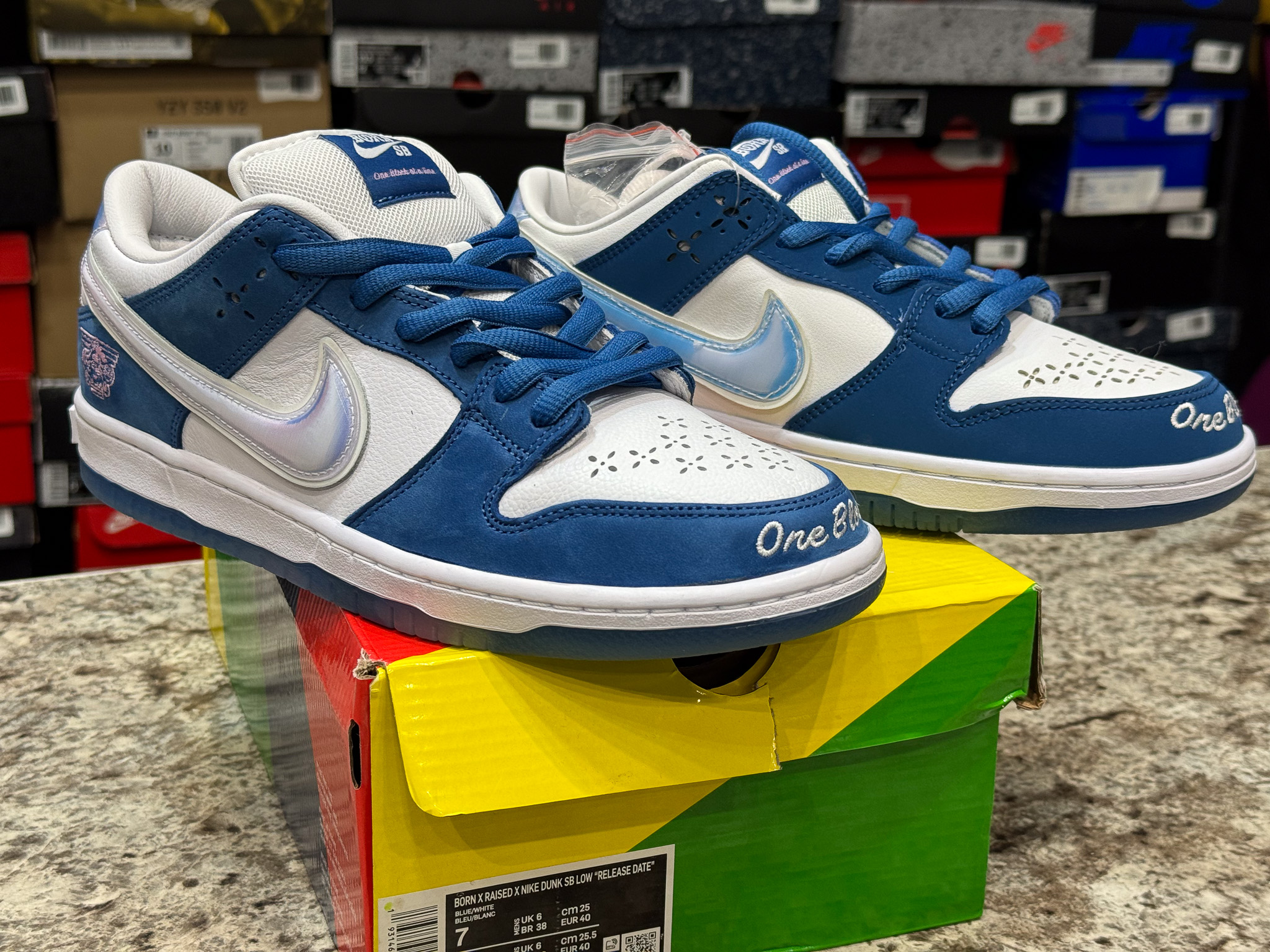
CORRECT!
This shoe is the fake! Pay close attention to the stitching on the Nike swoosh, the incorrect material used on the blue panels, and placement of the lettering on the toes. Additionally, the rainbow Nike Dunk box below is the incorrect box.
INCORRECT!
This is actually the real shoe. Pay close attention to the stitching on the Nike swoosh, the suede material used for the blue panels, and letter placement on the shoe’s toe.
